When you switch between your low beams and high beams, you definitely notice a visible difference in beam outputs. The high beam is brighter and travels far and wide, while your low beam sticks to the road in front and keeps it low. That’s because your two beams, specifically the bulbs, are built differently, and they function differently as well.
Your high beam comes from a 9005 bulb, and the low beam streams out of a 9006. Although they look similar at first glance, they have unique builds that prevent casual swapping between them. It means they are built uniquely to each other so that they only fit in their dedicated slots.
So, what are these differences? Why shouldn’t you just mount a 9005 on a 9006 slot? Let’s explore their distinct features and find out!
Understanding Headlight Bulb Types

Before we go into the details, it’s essential to understand what the headlight bulb models are and how they function. Halogen bulbs, LED bulbs, HIDs, and Lasers are the most dominating technologies in the headlights market. However, we’ll only discuss the Halogen and LED bulbs for this comparison.
Halogen Bulbs
Introduced in the 1960s, halogen headlight bulbs were developed as an enhancement over traditional incandescent bulbs. They quickly gained popularity due to their brighter illumination and longer lifespan (comparatively). The birth of these headlight bulbs marks a significant improvement in the history of vehicle lighting performance.
Halogen bulbs are constructed with a tungsten filament housed inside a quartz envelope, which is more heat-resistant than regular glass. The bulb contains a small amount of halogen gas, usually iodine or bromine. When the electric current passes through the tungsten filament, it heats up and emits light.
The halogen gas interacts with the evaporated tungsten, initiating a halogen cycle that redeposits the tungsten back onto the filament. This process extends the filament’s life and maintains consistent brightness.
Key Characteristics
- It provides a bright, white light that significantly enhances visibility over older incandescent bulbs.
- It emits light around 3000K, giving off a warm, yellowish glow.
- While more efficient than traditional incandescent bulbs, halogen bulbs are less efficient than modern LED or HID options.
- Typically, it lasts between 450 and 1000 hours, depending on usage and conditions.
- Produces significant heat, which can potentially damage the headlight assembly if not adequately managed.
Advantages
- Affordable and widely available.
- The simple design allows for easy replacement without specialized tools.
- Provides better illumination for safer night driving compared to older technologies.
Disadvantages
- Generates substantial heat, which can affect surrounding components.
- Compared to LEDs and HIDs, halogen bulbs have a shorter operational life.
- Traditional halogen bulbs consume more power, making them less energy-efficient than newer lighting technologies.
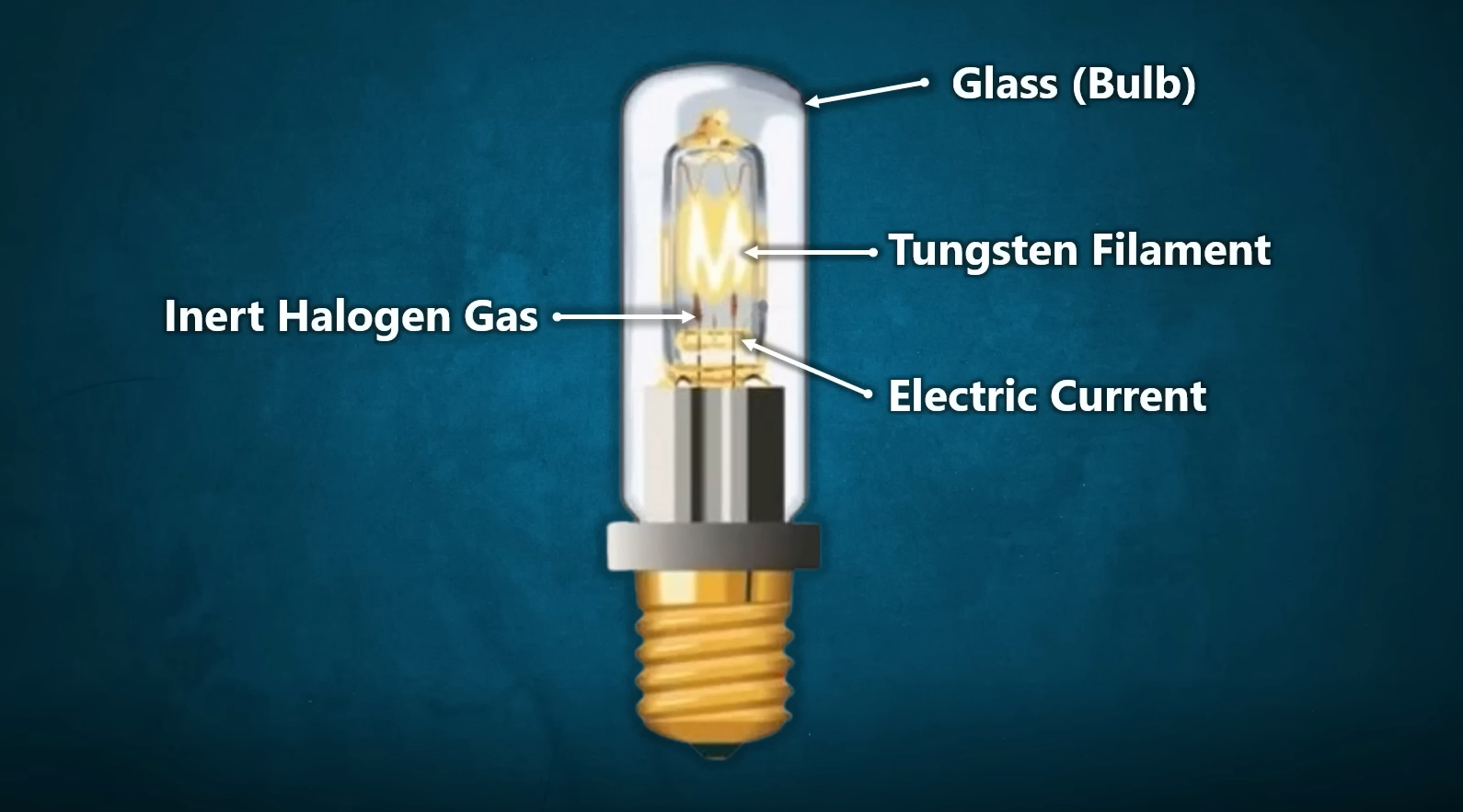
LED Bulbs
LED (Light Emitting Diode) technology was first developed in the 1960s, but it wasn’t until the 2000s that LEDs became practical for automotive use. With advancements in efficiency and performance, LED headlight bulbs have rapidly become a favored choice among drivers.
LED headlight bulbs operate by passing an electrical current through a semiconductor material, which emits light when electrons recombine with electron holes, releasing photons. Key components include CSP (Chip Scale Package) LED chips, which are efficient and provide high light output.
A heat sink, typically made of aluminum or copper, is used to dissipate heat and prevent the bulb from overheating. Additionally, a driver regulates the power supply to ensure consistent performance. The 360-degree light-emitting design ensures even light distribution, similar to traditional halogen bulbs.
Contrary to traditional Halogen lamps, LED projector headlights work both as high and low beam headlights. There are two beam bulbs in an LED lighting system, one for the high beam and the other for the low beam. The headlight housing module controls the reflection.
Key Characteristics
- Produces bright, white light with a color temperature typically ranging from 5000K to 6500K, closely resembling daylight.
- Consumes significantly less power than halogen and HID bulbs, offering superior energy efficiency.
- Long-lasting, typically between 30,000 to 50,000 hours, far outlasting halogen bulbs.
- They are highly resistant to vibrations and shocks, making them reliable in various driving conditions.
- Advanced heat sink designs effectively manage heat, protecting the bulb and headlight assembly from damage.
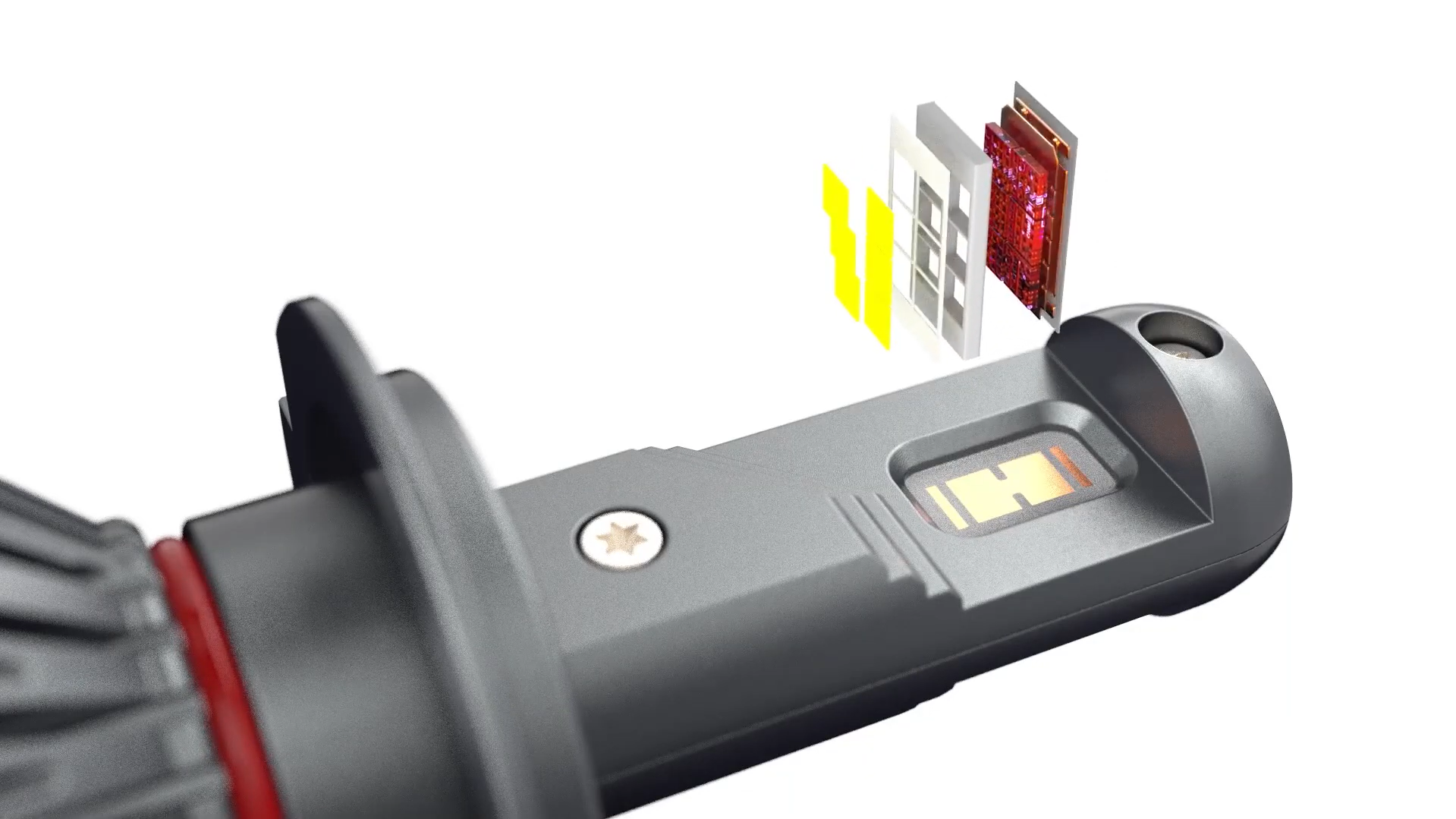
Advantages
- Requires fewer frequent replacements.
- Lower power consumption leads to energy savings.
- Bright, white light improves visibility when driving at night.
- A smaller base allows for easier installation in different vehicle models.
Disadvantages
- Higher upfront cost compared to halogen bulbs.
- Some vehicles may need additional components, such as CAN bus adapters, to prevent flickering or error messages.
- LED headlight bulbs have transformed automotive lighting, offering superior performance, efficiency, and longevity. They are a modern, reliable solution for drivers looking to enhance visibility and reduce maintenance.
Understanding Low and High Beams
Low Beams
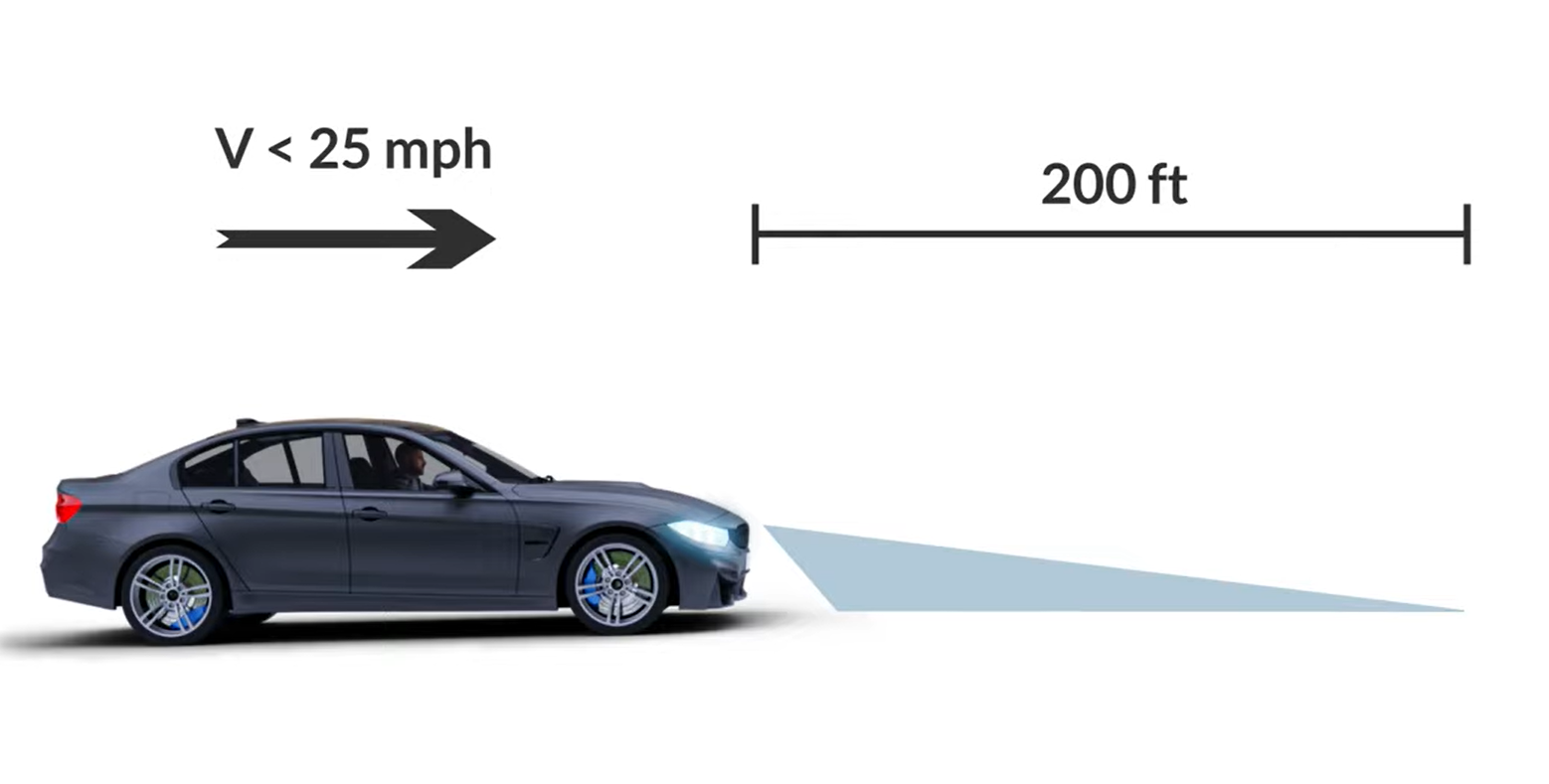
When the low beam light bulbs power up, they emit a soft glow directed towards the headlight housing. The housing has a precisely angled cut design that redirects the light on the road, generating a dipped beam. This is the low beam or the default headlight beam.
Low beams are crucial for urban driving and well-lit roads, providing the necessary visibility without blinding oncoming traffic. Designed to focus light directly on the road ahead, they ensure safe driving while minimizing glare. This makes low beams ideal for city driving and areas with ample street lighting, as they illuminate the path without scattering light excessively.
9006 Bulbs for Low Beams and Fog Lights
The 9006 bulb, also known as HB4, is widely used as both a low beam bulb and a fog light. These bulbs are engineered to produce a concentrated beam of light that bounces off the reflector and illuminates the road directly in front of the vehicle. This focused beam of 9006 bulbs makes sure that the driver can see the road clearly without causing glare for oncoming drivers.
In addition to their role in low beams, 9006 bulbs are also effective in fog lights. These lights are positioned lower on the vehicle and are designed to cut through fog, rain, and snow by projecting a wide, bar-shaped beam close to the road surface. The 9006 bulb’s ability to provide a low, broad beam makes it ideal for fog lights, helping drivers maintain clear vision in adverse weather conditions.
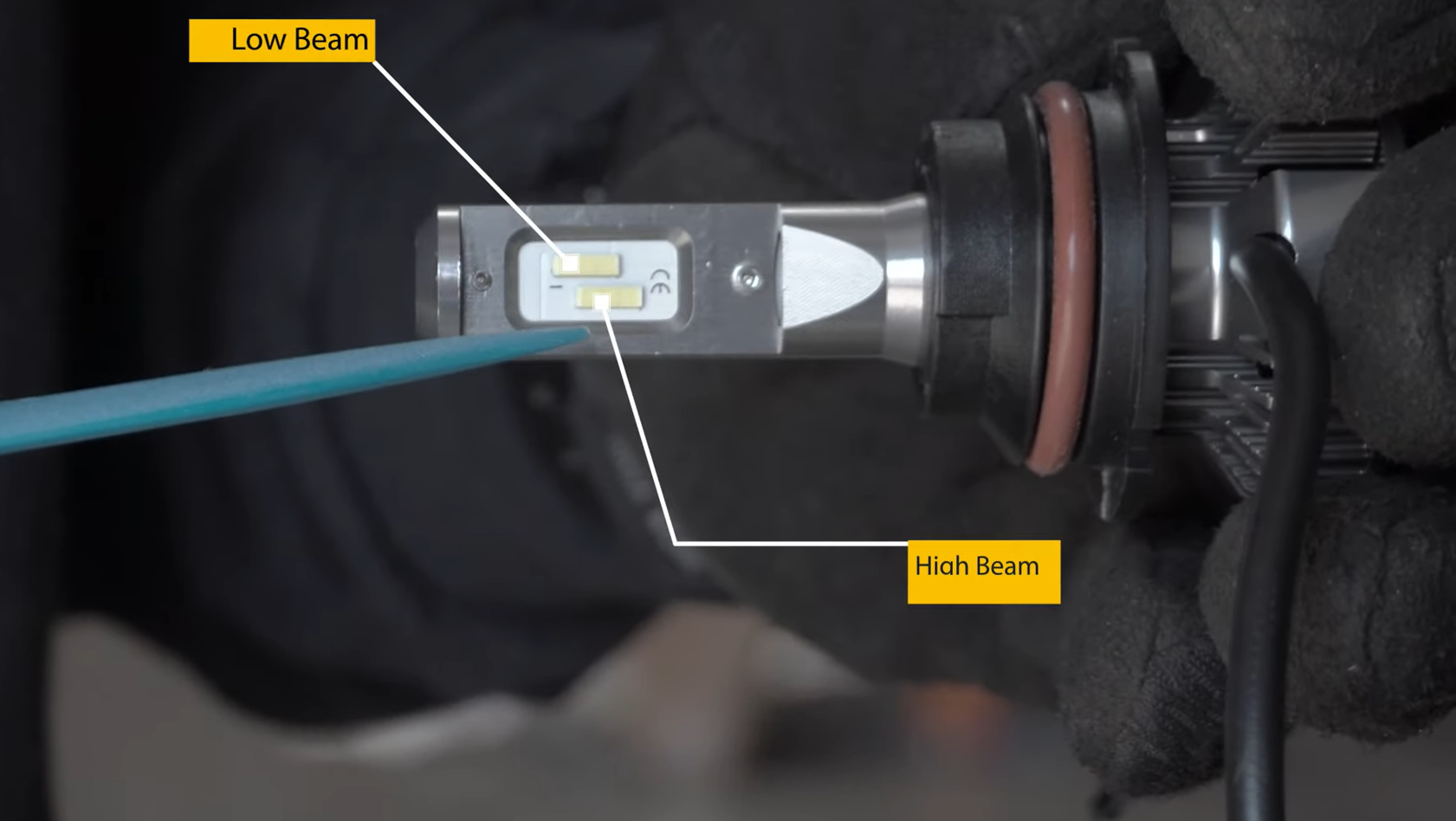
Single-Filament Design: The 9006 bulb’s single filament is optimized for low-beam applications that require a precise and controlled beam pattern.
Brightness and Power: Typically producing around 1000 lumens at 51-55 watts, these bulbs provide sufficient illumination for safe driving without blinding oncoming drivers.
Color Temperature: With a color temperature of around 4100K, 9006 bulbs emit a bright white light that enhances contrast and visibility.
Versatility: Suitable for both low-beam headlights and fog lamps, it is a practical choice for many vehicles.
Improved Visibility: Ensures clear visibility of the road ahead during night driving and in poor weather conditions.
Ease of Installation: Very easy to mount, often requiring no modifications to the vehicle.
High Beam
High beam bulbs, on the other hand, are vital for driving in rural areas or on unlit roads. Unlike low-beam light bulbs, they aren’t capped. Light from a high beam bulb shoots directly outwards, and it’s not moderated like a low beam light. It’s also known as the high-speed light.
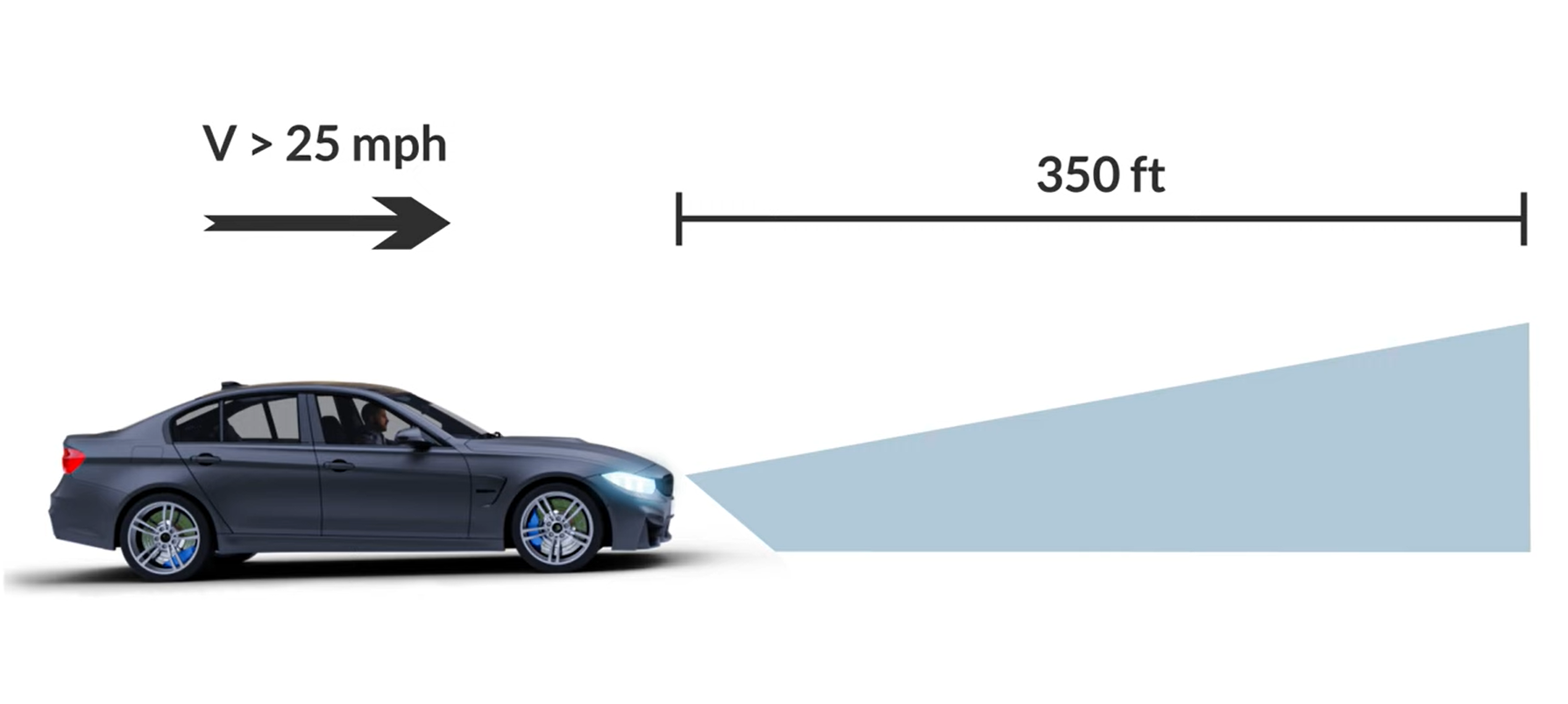
They provide a significantly brighter light that illuminates the road far ahead of the car. This increased visibility allows drivers to spot obstacles, road signs, and potential hazards from a greater distance for increased safety during nighttime or low-visibility conditions.
9005 Bulbs for High Beams
The 9005 bulb, also known as HB3, is commonly used in high beam headlights. These bulbs are designed to project a powerful, focused beam of light that covers a long distance, making them ideal for use in situations where maximum visibility is required.
Unlike low beam bulbs, which are angled downward to avoid blinding oncoming traffic, high beams are aimed straight ahead, ensuring the road ahead is fully illuminated.
Single-Filament Design: The 9005 bulb features a single filament optimized explicitly for high beam use, providing a precise and intense beam pattern.
Brightness and Power: 9005 bulbs typically produce between 800 to 1700 lumens and draw 55-65 watts of power. This high brightness ensures excellent visibility on dark roads, helping drivers to see further and react faster to potential hazards.
Colour Temperature: With a colour temperature ranging from 5000K to 6000K, 9005 bulbs emit a bright, white light that closely resembles daylight, improving contrast and clarity.
Durability: 9005 bulbs have a long lifespan, making them a reliable choice for frequent use, especially in challenging environments.
Enhanced Visibility: The high lumen output of 9005 bulbs ensures that drivers can see further down the road, improving reaction times and overall safety.
Versatility: While primarily used for high beams, 9005 bulbs are also suitable for some fog light applications, offering flexibility in their use.
Easy Installation: With a P20d base, 9005 bulbs are designed for easy installation, featuring a plug-and-play design that simplifies the process.
9005 vs 9006 Headlight Bulbs

Here’s a detailed comparison between the two bulbs based on their performance, applications, and other differences.
Brightness and Wattage
The 9005 and 9006 bulbs differ significantly in brightness and power consumption, each suitable for specific automotive lighting needs. The 9005 bulbs produce a higher brightness, ranging between 1700 to 2000 lumens. These are ideal for long-distance visibility or for driving at high speeds.
In contrast, 9006 bulbs generate between 1000 to 1500 lumens, sufficient light for closer-range visibility, particularly in urban environments. In terms of wattage, 9005 bulbs operate at 60-65 watts.
They have a higher lumen rating than the 9006 parts, so the extra wattage is understandable. The added power provides the necessary energy for their brighter output.
On the other hand, 9006 bulbs use 51-55 watts, consuming less power while still delivering adequate illumination for low-beam use.
Beam Type and Color Temperature
The difference in wattage aligns with the bulbs’ beam types. 9005 bulbs are specifically designed for high beam applications, projecting light straight ahead to cover a larger distance. Meanwhile, 9006 bulbs are engineered for low beam use, directing light downward to prevent blinding oncoming traffic.
Their color temperature also sets these bulbs apart. The 9005 bulbs typically range from 5000K to 6000K, a bright white light that closely resembles daylight. Conversely, 9006 bulbs usually have a colour temperature of around 4100K, a softer white light that is well-suited for city driving and well-lit roads.

Lifespan and Applications
When it comes to lifespan, 9005 bulbs generally last around 400 hours in halogen versions, which is sufficient for high beam usage where the lights are not continuously on. In comparison, 9006 bulbs offer a longer lifespan of approximately 1000 hours as they cater to the more frequent use associated with low beams.
As for applications, 9005 bulbs are ideal for high beams, especially in rural areas or on unlit roads where maximum visibility over long distances is crucial. They can also be used in some fog light applications due to their high output.
On the other hand, 9006 bulbs excel in low beam use, providing adequate visibility in urban driving and well-lit roads without causing glare. They are also commonly used in fog lights, where their broad, low beam is effective in cutting through fog, rain, and snow.
Build, Base Type, and Compatibility
The first visible difference between 9005 vs 9006 headlight bulbs is that the 9005 does not have a lumen limiter cap on top of it. Such a cap is used for glare reduction, as you will see on the 9006 headlight bulbs.
The base types also differ between the two, with 9005 bulbs featuring a P20d base designed for high beam sockets and 9006 bulbs equipped with a P22d 90° base for low beam sockets. These bases are not interchangeable without modifications. Make sure that each bulb is securely fitted in its appropriate application.

Choosing the Right Headlight Bulb
To ensure you make the right choice, start by consulting your vehicle’s manual. The manual will specify the correct bulb type for both low and high beams, providing you with the most reliable source of information.
Another option is to visit the manufacturer’s website. Most manufacturers offer a search tool where you can input your vehicle’s make, model, and year to find the appropriate bulb type.
Online databases are also helpful in finding the correct bulbs. Websites like Carlightvision provide tools where you can enter your vehicle details to identify the right bulb type.
Alternatively, you can go to a local auto parts store. Many of these stores have guides or knowledgeable staff who can assist you in identifying the correct bulbs for your vehicle.
Consider Your Driving Habits
Your driving habits will undoubtedly influence the choice of headlight bulbs. For urban driving, low-beam bulbs like the 9006 are ideal. They provide sufficient visibility on well-lit roads without causing glare to oncoming traffic.
Conversely, for rural driving on unlit roads, high-beam bulbs such as the 9005 are more suitable. They deliver a brighter, more focused beam that illuminates the road ahead, creating optimal visibility.
If you frequently drive in both urban and rural settings, using a combination of both types is beneficial. Use low beams in the city and switch to high beams for adequate lighting on dark, rural roads.

Connector and Socket Compatibility
Ensuring Compatibility
When selecting headlight bulbs, it’s essential to check the connectors and sockets. The 9005 bulbs feature a P20d base, designed for high beam applications with a distinct connector design that differs from the 9006 bulbs.
The 9006 bulbs have a P22d 90° base, so they clearly do not share the same socket. You cannot replace a 9005 bulb with a 9006 without modifications.
Consult your vehicle’s manual to identify the correct bulb type and get detailed information about the connectors and sockets. Additionally, inspect the existing bulbs by removing them from your vehicle and comparing their bases and connectors with the new bulbs to ensure compatibility.
Making an Informed Decision
When it comes to 9005 vs 9006 bulbs, you should always prioritize your driving needs. Use 9006 bulbs for urban driving, as they offer good visibility without glare. For rural driving, 9005 bulbs are best for high beam applications.
Compare bulb types and wattage. Halogen bulbs are cheaper but last less and are dimmer than LEDs. LEDs are brighter, last longer, and are more energy-efficient. Also, check the color temperature and beam pattern to suit your driving conditions.
Upgrade Your Fleet’s Headlights—Get Expert Advice & Bulk Pricing Today!
Ensure the bulbs fit your vehicle’s connectors and sockets. Check and double-check your vehicle’s specifications and avoid improvisations.
For premium aftermarket LED bulbs and any assistance with your car headlight, visit Carlightvision, and contact us now to get a free solution for your business.




